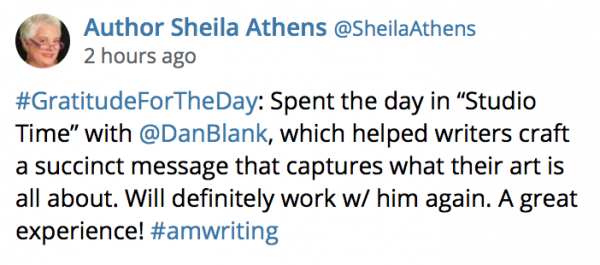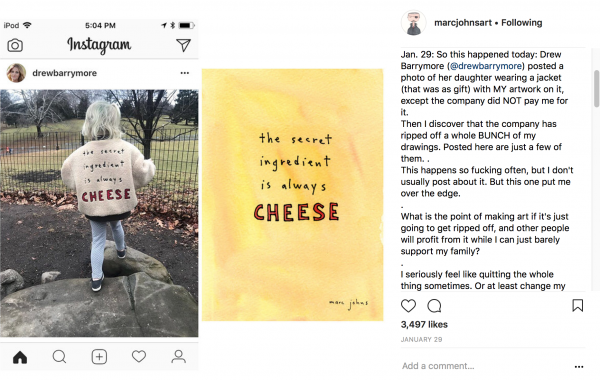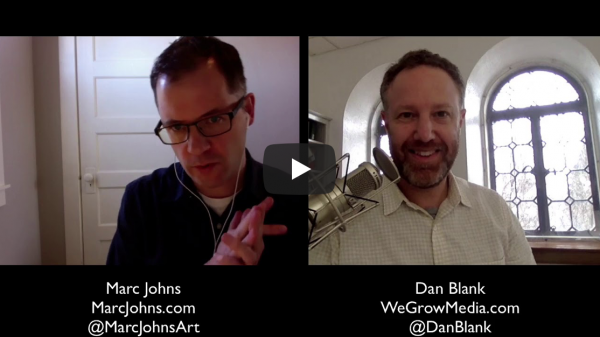A lot of writers and artists want to know what works when it comes to marketing. Often, they want to find a simple trick that they can use quickly to have more people become aware of their books or art or mission. It’s not uncommon for me to hear things like:
- “I tried Facebook, it didn’t work.”
- “Blogging doesn’t work anymore, my friend had one and it was a waste of time.”
- “I heard podcasting is the hot new trend, how can I leverage that for my book?”
The common thread here is that these people are looking for a single marketing tactic to quickly move the needle on growing their audience or increasing sales. If they don’t see immediate growth, they become jaded and stop using it.
Selling your creative work is more complex than simply launching a blog or opening an Instagram account. Don’t get me wrong, those things are wonderful, but they are a part of a larger process to develop trust with your ideal audience.
Marketing can be many things. But today I want to talk about the kind of marketing that is built upon trust, not trickery. One where it leads to true lifelong fans of your work.
Let me give you a clear example from my own life. This week, author Sheila Athens joined me for a one-day workshop I ran called Studio Time. Prior to the event, she told me how she came to sign up for it:
“I saw you speak at a conference a few years ago and thought you really knew your stuff. I enjoy your podcast. I am a book coach at Author Accelerator and I know you collaborate a lot with Jennie Nash. Anyone who Jennie respects, automatically gets my respect and attention, too. I have been watching your Mastermind solicitations from afar, but have hesitated to sign up because of the cost. Studio Time is a way to get a taste of your work so that I can more accurately decide about signing up for a future Mastermind.”
This is how real people act. They are careful with their time, attention and resources. They are driven by trust and respect.
Look at how many times, and across how many channels, Sheila came in contact with something I did as she considered working directly with me:
- She saw me speak at a large in-person event in 2015.
- She listens to my podcast.
- She saw that Jennie Nash has collaborated with me a lot. Sheila likely signed up for some of the free webinars Jennie and I have done over the years.
- She has received my weekly email newsletter.
So that is four different channels over the course of three years. This week she added another channel to that list, the Studio Time workshop. After we finished up with it yesterday, Sheila shared this on social media:

Marketing takes time. And that is okay. Why? Because pretty much every single one of the people who asks me about what works in marketing, also tells me that they don’t want to be “one of those spammy marketers. Someone always pushing their work on others.” In other words, their goal is reach someone like Sheila. To develop a connection with her based on respect and trust.
Because that is the type of relationship that any artist would want with their audience.
In some ways, marketing never gets easier. Someone may say, “Oh Dan, if I had thousands of followers and could earn a living entirely through my writing or art, I would be 100% happy.” But that doesn’t take into the account the complexity of sharing and marketing one’s work, even when you are successful.
This week I interviewed Marc Johns, who earns a living for him and his family (wife and 2 kids) by selling his drawings. Yet, he shared this with his 26,000 Instagram followers in January:
“I seriously feel like quitting the whole thing sometimes.”
What made him say that? Well, Drew Barrymore shared a photo of her daughter wearing a jacket that had Marc’s art on it:

Amazing right? This is the type of thing that many artists dream about: a celebrity sharing their work with 8 million followers. But there was a problem. The jacket was not an officially licensed product. The company who made it stole Marc’s art. (Drew didn’t know this.)
Marc was crushed. This is not the first time it has happened for him, but because Drew shared it, it just felt bigger. It also felt very personal. Marc works from home, and this art is all that supports his family. He explained to me how his art was an extension of himself. When that gets stolen, it is as if a piece of you has been taken.
Marc spent two weeks dealing with the fallout. When I talked with him, he shared an extremely honest account of what happened, and what he did about it. He doesn’t hold anything back.
Luckily, this particular story has a happy ending, but I know that isn’t the case for many artists. Marc and I also talk about the complexity that all creators face when dealing with art, money, and piracy. You can watch us talk below, or listen to the podcast on iTunes.
Thank you.
-Dan

